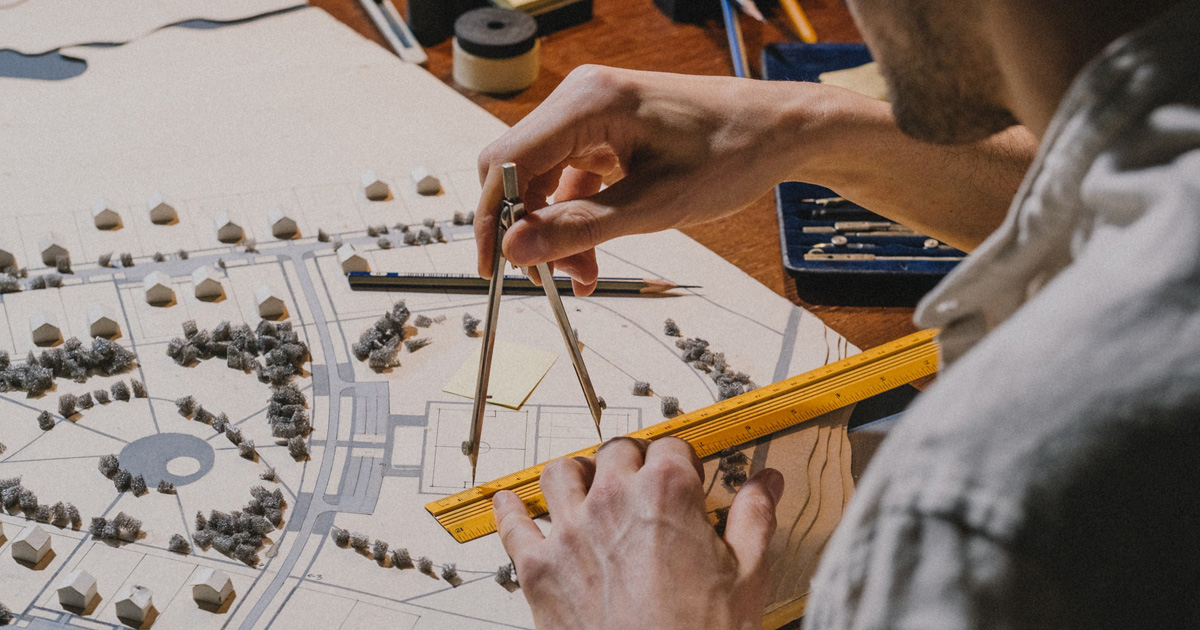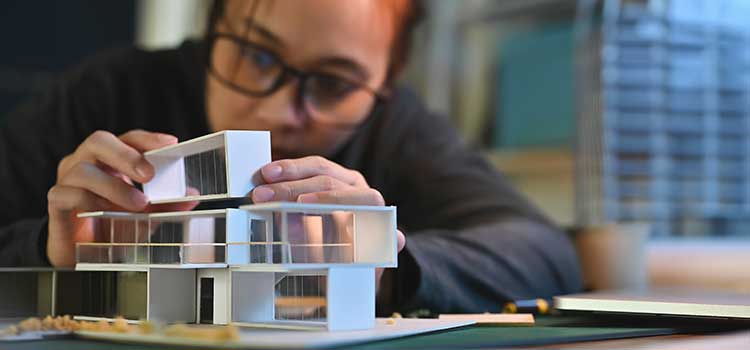Architect Firm Branding Strategies That Actually Work
Architect Firm Branding Strategies That Actually Work
Blog Article
Recognizing the Diverse Profession Paths Available for Aspiring Architect
As an ambitious Architect, you have a world of profession paths waiting for you. Whether you're attracted to typical style or the nuances of sustainable style, there's a specific niche that straightens with your interests.
Standard Architecture: Creating Buildings and Frameworks
Standard style focuses on developing buildings and structures that mix capability with aesthetic charm. Your styles can reflect cultural heritage, showcasing regional customs while meeting modern needs.
You'll develop abilities in drafting, model-making, and website analysis, allowing you to visualize and communicate your concepts successfully. Engaging with clients, you'll require to recognize their vision and convert it right into possible designs.
In addition, building codes and sustainability techniques are essential in your work, guaranteeing your structures are environmentally friendly and safe. As you grow in your occupation, you'll discover opportunities in domestic, business, and even repair projects, each offering unique obstacles. Accepting traditional style leads the way for a satisfying career that pays tribute to the past while shaping the future.
Urban Planning: Shaping Areas and Public Spaces
As an ambitious Architect, you can play an essential role as a city planner, transforming how communities operate and communicate. By utilizing area involvement methods, you'll ensure that citizens have a voice fit their atmosphere. Plus, integrating sustainable design concepts will certainly aid develop spaces that not only fulfill today's demands yet additionally safeguard the future.
Duty of Urban Planners
While many may assume of architects as the sole visionaries behind structures, urban organizers play an essential function in forming the wider landscape of neighborhoods and public spaces. They evaluate land usage, zoning regulations, and community needs to produce sustainable atmospheres that improve lifestyle. By working together with numerous stakeholders, you'll help develop parks, transportation systems, and residential areas that promote social communication and access. Urban coordinators likewise focus on ecological considerations, ensuring that advancements incorporate green areas and assistance biodiversity. Your expertise in spatial design and neighborhood characteristics enables you to visualize future development while protecting cultural heritage. In this vital role, you'll straight affect just how people experience their surroundings, making every project an opportunity for positive adjustment.
Neighborhood Involvement Approaches
Effective community interaction approaches are vital for metropolitan coordinators to ensure that the voices of citizens are listened to and valued in the preparation procedure. To foster meaningful dialogue, you must focus on open discussion forums and workshops where community participants can express their ideas and issues. By actively including and listening feedback, you'll create rooms that reflect the community's demands, inevitably leading to even more lasting and effective city settings.
Lasting Layout Concepts
When making city areas, incorporating lasting style concepts is critical for developing atmospheres that flourish both environmentally and socially. Take into consideration incorporating eco-friendly rooms, like gardens and parks, to enhance biodiversity and enhance air quality.
Designing with water conservation in mind is additionally crucial-- think of rainfall gardens and absorptive surfaces to take care of stormwater. Including neighborhood members throughout the preparation process warranties that the areas you create fulfill their needs and motivate social interaction. By welcoming these concepts, you'll add to lively, lasting metropolitan landscapes that profit everybody.

Landscape Style: Creating Lasting Outside Atmospheres
As you explore landscape style, you'll find necessary layout principles that develop useful and gorgeous outdoor areas. Lasting techniques play a crucial role in ensuring these atmospheres flourish while minimizing ecological impact. And also, you'll find a range of career possibilities that allow you to make an actual difference in exactly how individuals communicate with nature.
Layout Principles in Landscape
Comprehending style principles in landscape design is essential for creating lasting outside atmospheres that balance with nature. You'll require to consider aspects like percentage, range, and balance to ensure your styles feel cohesive and welcoming. In addition, pay focus to seasonal adjustments, creating with materials that complement the surroundings year-round.
Lasting Practices Introduction
Sustainable methods in landscape architecture not only concentrate on aesthetic appeals however also prioritize eco-friendly wellness and resource conservation. By incorporating native plants, you enhance biodiversity and reduce the demand for chemical fertilizers and pesticides. Executing efficient watering systems assists conserve water and decreases drainage, securing nearby ecosystems. You can make spaces that advertise soil health, such as making use of organic products and practicing permaculture principles. In addition, integrating eco-friendly framework, like rainfall gardens and permeable pavements, help in stormwater administration and reduces metropolitan warm. You contribute to a much healthier planet and supply spaces that promote area connection when you produce exterior atmospheres with sustainability in mind. Inevitably, these practices ensure your layouts profit both people and the atmosphere for several years to find.
Profession Opportunities Expedition
With a strong foundation in sustainable methods, landscape style supplies a selection of career paths that allow you to make a significant effect on the atmosphere. You could function as a landscape developer, creating Bonuses visually pleasing and useful exterior rooms, or concentrate on eco-friendly reconstruction, assisting to revive damaged ecosystems. Urban organizers often team up with landscape engineers to develop environment-friendly rooms in metropolitan settings, improving city livability. If you're passionate about education and learning, take into consideration coming to be a landscape design teacher, inspiring future generations. Additionally, you could function with nonprofits concentrated on environmental sustainability or participate in study to introduce new practices. Each course not just forms attractive atmospheres however also cultivates a much healthier world for future generations.
Lasting Design: Concentrating on Eco-Friendly Practices
As you explore your occupation in architecture, accepting green practices can establish you apart in a competitive field. Lasting design concentrates on creating structures that reduce ecological impact while improving occupant wellness. By incorporating sustainable materials, energy-efficient systems, and lasting structure techniques, you'll continue reading this add to a greener future.
Start by obtaining knowledge of eco-friendly accreditations like LEED or BREEAM, which can strengthen your qualifications. Think about exactly how natural light, air flow, and thermal performance can enhance layout. Team up with designers and environmental professionals to introduce solutions that minimize waste and conserve sources.
Don't neglect the value of neighborhood participation-- appealing local stakeholders can influence layouts that harmonize with the environment. As clients increasingly prioritize sustainability, your competence in green techniques will certainly not just draw in projects yet also fulfill your interest for responsible design. Embrace this vital aspect of the career, and view your profession grow.
Historic Preservation: Protecting and Restoring Social Heritage
While you begin on your building journey, take into consideration the crucial function of historic conservation in keeping our social heritage. This field focuses on the protection and repair of substantial structures, sites, and frameworks that tell the stories of our past. By taking part in historic preservation, you'll aid secure the architectural legacy that shapes area identity.
As a historical preservation Architect, you'll evaluate historical importance and evaluate the problem of structures. You'll work very closely with chroniclers and conservationists to ensure authentic repair strategies are utilized. This profession path enables you to blend creativity with research, enabling you to design services that appreciate original products and workmanship.
Your work not just adds to sustainability by recycling existing buildings however additionally cultivates a feeling of pride within communities. Embracing this path will assist you end up being a guardian of background, maintaining the stories and appearances that enhance our lives.
Interior Architecture: Enhancing Indoor Spaces
Historic conservation and indoor architecture both share a commitment to boosting the developed atmosphere, but they concentrate on various elements. While historic preservation stresses keeping a framework's cultural and historical worth, indoor architecture zeroes in on enhancing interior rooms for functionality and looks.
As an ambitious Architect, you'll find that interior architecture enables you to blend creative thinking with technical skills. You'll design areas that not only look excellent however also promote comfort and effectiveness. This area entails comprehending just how light, shade, and materials communicate within an area, impacting state of mind and use.
You'll service various projects, from residential homes to commercial offices, making certain that each atmosphere satisfies the requirements of its residents. By prioritizing user experience, you can change insides right into functional and inspiring areas, making a considerable effect on how people interact with their surroundings. Accept the chance to enhance indoor settings and form the means individuals work and live.
Industrial Design: Combining Capability With Aesthetic Appeals
Commercial style plays a necessary function in creating items that effortlessly blend aesthetic appeals with performance, ensuring that what you make use of everyday is not only aesthetically enticing however also sensible. As a hopeful Architect, you might engage yourself in this area, concentrating on making whatever from furniture to customer electronics. Your job includes recognizing individual needs, products, and producing procedures, enabling you to develop ingenious solutions that improve daily experiences.
In commercial style, you'll often work together with marketers, manufacturers, and designers, making sure that your designs are not just beautiful however also possible. You'll find out to stabilize form and function, prioritizing use without sacrificing style. By refining your abilities in laying out, 3D modeling, and prototyping, you'll be well-equipped to bring your concepts to life. This job path provides a dynamic atmosphere where creative thinking fulfills practicality, making it a gratifying option for engineers curious about shaping the products of tomorrow.
Regularly Asked Concerns
What Educational Credentials Do I Need to Come To Be a Designer?
To end up being an architect, you'll need an expert level in style, normally a Bachelor's or Master's. Furthermore, you'll have to finish a teaching fellowship and pass the Architect Enrollment Evaluation to practice legitimately.
Are There Accreditation Demands for Various Building Profession Paths?
Yes, there're qualification demands for various building courses. Architect. You'll need to pass examinations, full teaching fellowships, and sometimes pursue specialized training, depending on your chosen focus, like landscape architecture, urban design, or historic conservation
What Software Skills Are Vital for Architects Today?

Just How Can I Gain Practical Experience While Examining Architecture?
You can get useful experience by interning at building companies, participating in layout competitions, offering for neighborhood tasks, or teaming up with classmates on real-world projects. These opportunities enhance your abilities and build important links in the market.
What Work Opportunities Exist Outside Typical Design Firms?
You can discover different work chances outside typical architecture companies, like city preparation, interior style, landscape style, building monitoring, real estate advancement, or perhaps roles in sustainability consulting. Each offers one-of-a-kind challenges and benefits.
Whether you're attracted to traditional design or the subtleties of sustainable style, there's a niche that lines up with your passions.When making urban rooms, including lasting design principles is critical for creating atmospheres that grow both environmentally and socially.As you explore landscape design, you'll find necessary design principles that produce functional and stunning outside rooms.Understanding style principles in landscape design is necessary for developing lasting exterior settings that harmonize with nature.In commercial layout, you'll often collaborate with engineers, producers, and online marketers, ensuring that your designs are not only gorgeous yet also viable.
Report this page